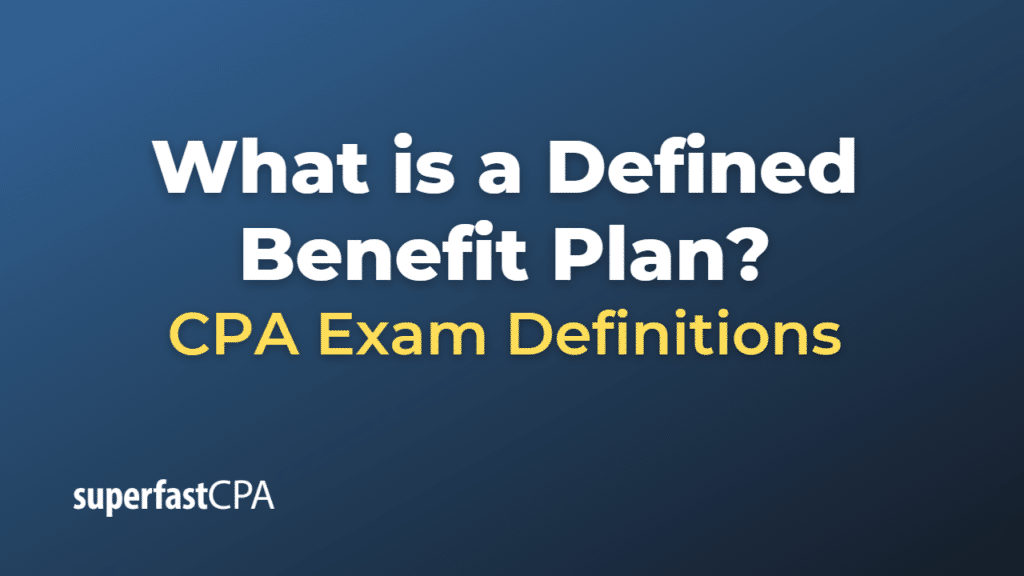Defined Benefit Plan
A Defined Benefit Plan is a type of retirement plan where an employer/sponsor promises a specified monthly benefit on retirement that is predetermined by a formula based on the employee’s earnings history, tenure of service, and age, rather than directly depending on individual investment returns.
The most common type of defined benefit plan is a pension. In a traditional pension plan, the employer contributes to a fund on behalf of the employee, and these funds are invested. The employee then receives a set amount of income in retirement, regardless of the performance of the investment.
The benefit in a defined benefit pension plan is determined by a formula that can incorporate the employee’s pay, years of employment, age at retirement, and other factors. For example, a common formula might be 1% of the employee’s average salary for the last five years of employment times total years of service.
It’s important to note that these plans put the investment risk on the employer, as they are obligated to pay a specified benefit regardless of how well the investments perform. As a result, these types of plans have become less common in recent years, with many employers shifting to Defined Contribution Plans like 401(k)s, where the employee bears the investment risk.
Example of a Defined Benefit Plan
Let’s say Susan works for a company that offers a defined benefit plan. The plan promises to pay a monthly retirement benefit equal to 1.5% of her final average salary for each year of her service to the company. The final average salary is defined as the average of Susan’s salary over her last five years of employment.
Susan works for the company for 30 years and retires. Her average salary for her last five years was $80,000.
To calculate her annual retirement benefit, the company would multiply her years of service (30) by the percentage stated in the plan (1.5%), and then multiply that by her final average salary ($80,000).
So, Susan’s annual retirement benefit would be: 30 (years of service) * 1.5% * $80,000 = $36,000 per year.
This means Susan would receive $36,000 per year in retirement, typically divided into monthly payments of $3,000 ($36,000 divided by 12 months).
This example simplifies the process, and in practice, the calculation of benefits can be more complex. For example, there may be adjustments based on whether the employee takes an early retirement, chooses to have the benefit paid over their lifetime or a certain number of years, or chooses to provide a continuing benefit to a surviving spouse.
Remember, in a defined benefit plan like this, the employer is responsible for ensuring there are sufficient funds to pay the promised benefit. This is different from a defined contribution plan like a 401(k), where the employee contributes a certain amount and bears the risk of the investment performance.













